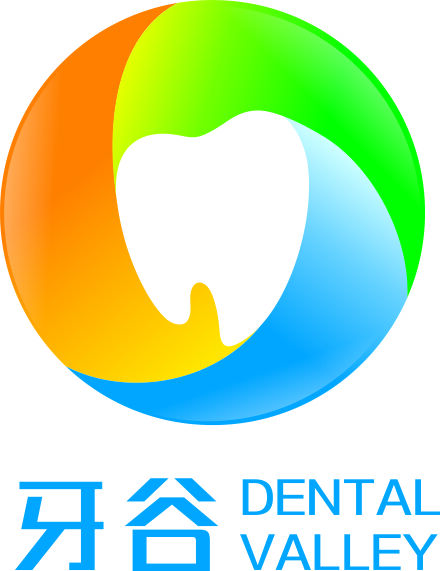Dental procedures range from routine checkups right through to complicated oral surgeries, but they all depend heavily on getting things right, working efficiently, and keeping everything clean. Dentists and hygienists need their tools to be just right for doing the job properly without any hiccups along the way. We're talking about much more than mere gadgets here. These tools form the backbone of any good dental practice that actually works well day after day. Still, there's always some debate going on about which instruments really matter most in everyday dental work. What makes something indispensable versus just nice to have?
Whether you're setting up a new clinic or refining your current inventory, understanding the most commonly used dental instruments will help ensure youâre fully prepared for day-to-day operations.
Basic Examination Tools
Mouth Mirrors
One of the most frequently used dental instruments, the mouth mirror provides indirect vision, reflects light, and retracts tissues. It allows dentists to view hard-to-reach areas without moving the patient excessively, minimizing discomfort and maximizing visibility.
The mirrorâs ergonomic design also helps maintain proper posture during examinations, reducing clinician fatigue over time.
Explorers and Probes
These tools are crucial for detecting caries, calculus, and other anomalies on the tooth surface. The dental explorer, often with a pointed tip, is ideal for tactile assessment, while periodontal probes help measure gum pocket depth and assess periodontal health.
Used in almost every exam, these instruments play a vital role in preventive care and early diagnosis.
Tools for Cleaning and Debridement
Scalers and Curettes
Professional teeth cleaning depends heavily on these manual instruments. Scalers are used to remove plaque and calculus above the gum line, while curettes work below the gum line for root planing and deeper cleaning.
Both are essential for non-surgical periodontal therapy and are standard in every hygienist's toolkit.
Ultrasonic Scalers
Many modern clinics now use ultrasonic versions of traditional scalers. These devices use high-frequency vibrations to dislodge debris while also flushing the area with water. Though technically machines rather than handheld instruments, theyâre often grouped with dental instruments due to their direct role in patient care.
Combining manual and ultrasonic tools enhances efficiency and treatment outcomes.

Restorative Procedure Essentials
Dental Burs and Handpieces
Dental burs come in various shapes and sizes, attached to high- or low-speed handpieces to cut tooth structure, remove decay, or shape restorations. Their versatility makes them indispensable across almost all clinical procedures.
Selecting the right burs for different materials and patient needs improves precision and comfort during treatments.
Excavators and Condensers
Excavators help remove softened dentin, while condensers are used to compact restorative materials into cavity preparations. Together, these tools support the placement of temporary or permanent fillings.
They exemplify how dental instruments are carefully designed for both tactile control and material compatibility.
Tools for Surgical Procedures
Elevators and Forceps
Tooth extractions require instruments that apply the right amount of force without damaging surrounding structures. Elevators loosen the tooth from its socket, while forceps grip and extract it.
These instruments must be durable, well-balanced, and sterilizableâfactors that directly impact surgical success.
Bone Files and Surgical Scissors
For more complex procedures, tools like bone files (used to smooth bone edges) and surgical scissors (for tissue trimming) come into play. While not used in routine treatments, they are vital in specialized practices such as oral surgery or implant placement.
Proper maintenance and sterilization of surgical dental instruments are critical to infection control and procedural success.
Impression and Finishing Tools
Impression Trays and Spatulas
For procedures involving crowns, bridges, or dentures, accurate impressions are essential. Metal or plastic impression trays hold the alginate or silicone materials in place, while spatulas help mix and apply them evenly.
Having a full range of sizes and shapes ensures better adaptability for diverse patient anatomies.
Articulating Paper Holders and Polishers
After fillings or prosthetic installations, dentists need to check bite alignment. Articulating paper and its holders help detect high spots. Polishers, on the other hand, smooth out restorations to prevent irritation and increase longevity.
These final touches make a big difference in overall treatment quality and patient satisfaction.
Storage, Sterilization, and Organization
Cassette Trays and Instrument Pouches
Beyond actual use, the handling of dental instruments is equally important. Cassette trays allow for systematic organization and efficient sterilization, reducing handling errors and increasing safety.
Proper storage also extends instrument lifespan and keeps the clinical environment clean and organized.
Autoclave Indicators and Maintenance Tools
To ensure every instrument is properly sterilized, clinics use indicator strips and cleaning brushes. These supporting tools may not be used in procedures, but they guarantee the readiness of primary instruments for the next patient.
Sterilization compliance isn't just a regulationâit's a commitment to quality care.
Conclusion â Equipping Your Clinic for Excellence
Knowing which dental instruments are most commonly used allows dental professionals to equip their clinics effectively and make informed purchasing decisions. From diagnostic tools and scaling devices to surgical essentials and impression accessories, each instrument serves a distinct role in ensuring seamless, high-quality care.
Ultimately, your investment in reliable, ergonomic, and sterilizable instruments is an investment in your patientsâ health, your teamâs efficiency, and your clinicâs success. Whether youâre updating your inventory or training new staff, familiarity with these tools builds confidence and enhances treatment outcomes across the board.
FAQ
What are the basic instruments every dental clinic should have?
Essential instruments include mouth mirrors, explorers, probes, scalers, curettes, handpieces, and forceps. These tools are used daily for examinations, cleanings, and minor procedures.
How often should dental instruments be replaced?
With proper care and sterilization, most instruments can last years. However, any signs of rust, bending, or dullness warrant replacement to maintain safety and effectiveness.
Are disposable dental instruments safe to use?
Yes. Disposable instruments are designed for single-use and are particularly useful in reducing cross-contamination risks, especially during high-volume procedures.
How should dental instruments be sterilized?
Instruments should be cleaned in ultrasonic baths (if applicable), dried, packaged, and sterilized in an autoclave. Always follow manufacturer guidelines and local regulations.

